Varieties of yellow dahlias and their cultivation

Dahlia varieties with their beauty successfully compete with roses. The beginning of flowering of the first falls in the middle of summer and continues until the very frost. Dahlias, which are distinguished by their unpretentiousness and easy care, are especially popular. Most often, those plants that are not afraid to winter in the ground linger on the flower beds.
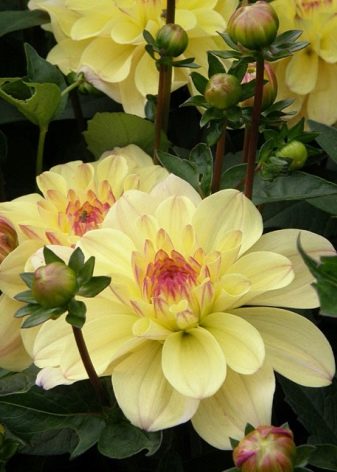
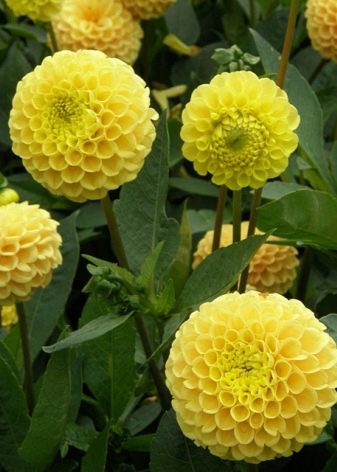
Varietal variety
Dahlias are representatives of the large Astrov family. With its spectacular appearance and long flowering period, the plant is very popular among gardeners. Dahlias differ not only in a very diverse color palette, but also in all kinds of shapes. The main advantage of the plant over other flowers is a rather long flowering, differences in color, the presence of varieties with a beautiful needle-like shape. According to various sources, there are from 35 to 42 types of dahlias, and the number of various varieties is no less than 15 thousand. VThey all have different characteristics, namely:
- height;
- Colour;
- the size;
- the shape of the flower inflorescence.
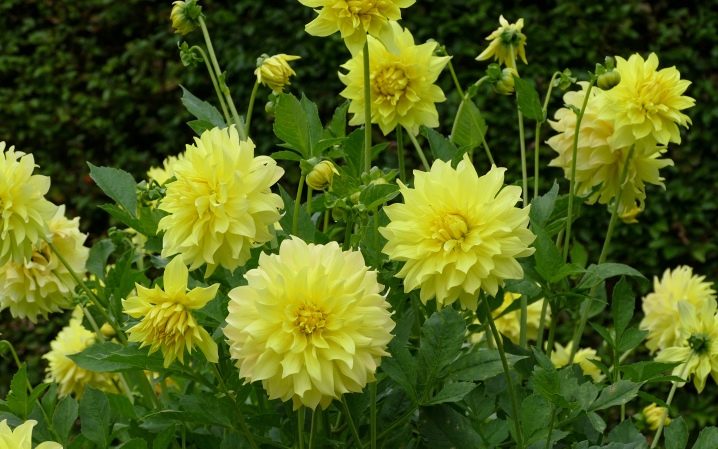
Flowers are grown for a cut for bouquets, used as a container, device, flower bed plant.
Correctly selected location of dahlias minimizes caring for them, making it absolutely not burdensome.
Spartacus Yellow
Dahlias of the Spartacus Yellow variety are distinguished by a lush and powerful shrub with hollow stems up to 1.2 m high. On the stems there are numerous feathery leaves of a dark green hue. From July to September, abundant and prolonged flowering continues.
Dahlia blooms in large inflorescences. The flower "Spartacus Yellow" is complex, double, large. Its diametrical size is 22 cm. The flowers are lemon yellow, very beautiful and decorative. The ligulate flowers, which are wide and flat in shape, attract the attention of their slightly corrugated petals with curled and pointed tips.
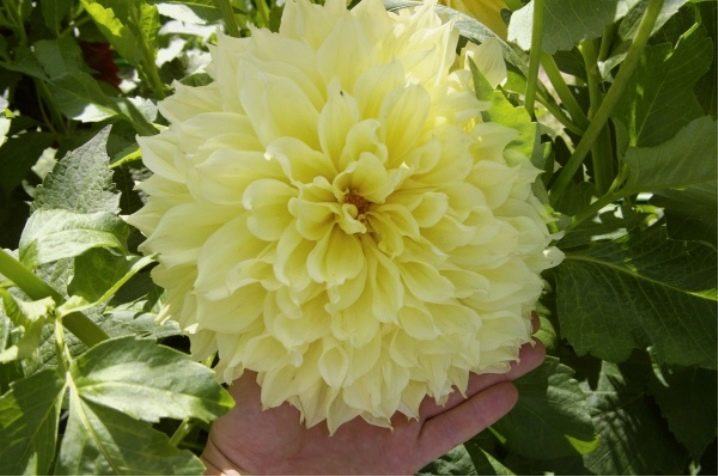
Labella medio fun yellow picotee
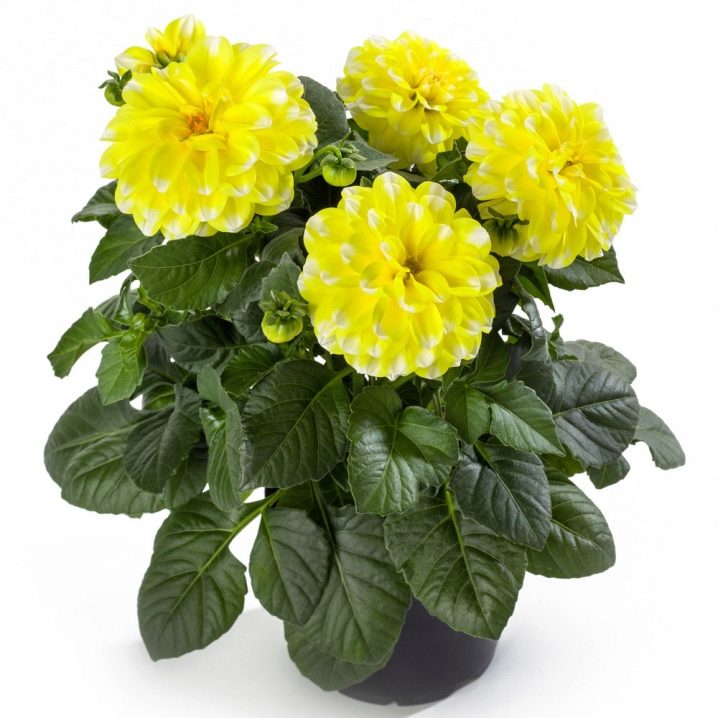
This plant is of a curb type, low - no more than 20 cm. Often planted in containers and flowerpots.
Looks beautiful in border decor and mixed flower beds, taking up space in the middle ground.
Dahlias of this variety have an external resemblance to anemone peonies.
Yellow Star
The full name of the dahlia is Cactus en semi cactus Yellow Star. In translation, this name means "yellow star". The plant belongs to the group of cactus dahlias. This tall variety grows up to 0.9 m.
On the flower beds it looks very exotic and spectacular.
Absolutely double flowers have a creamy lemon color. The basket-shaped inflorescence has an average size of about 15 centimeters in diameter.
The ligulate petals are narrow, disheveled, rolled up in a tube, multidirectional from the flower center. Flowers are tubular, rather small. Despite this, they are considered optimal for cutting into a bouquet. In addition, using flowers for single or mixed plantings, you can achieve a beautiful view of the border zones, all kinds of flower beds.

Mignon
Another representative of the curb dahlias is the Mignon variety. The average plant growth, reaching a height of 0.4 m, allows it to be used for growing not only in flower beds, but also for container forcing. The variety is characterized by simple flowers that resemble chamomile in appearance. The flower is 8-10 cm in size and consists of 8 petals.The color palette of colors is varied: there are white, red, pink and burgundy shades of dahlias.
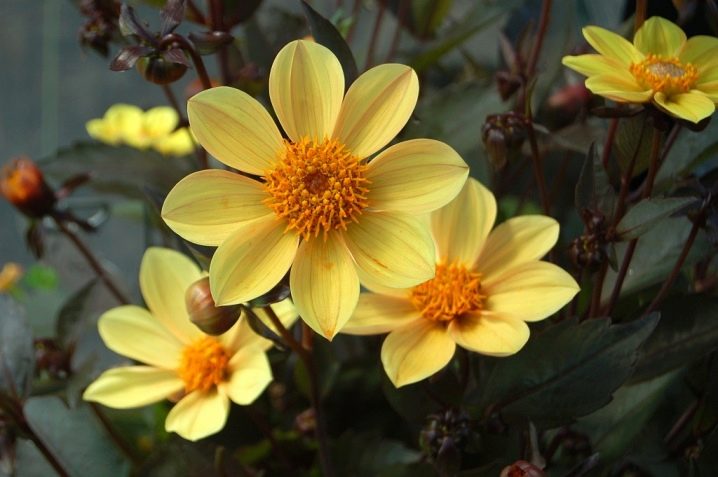
Growing features
To grow dahlias, you should provide them with fertile soil with good air permeability and high drainage properties. Tubers should be planted after the threat of recurrent frost has passed. It is advisable to add a complex mineral fertilizer to the planting pits. During planting, the tubers are well watered.
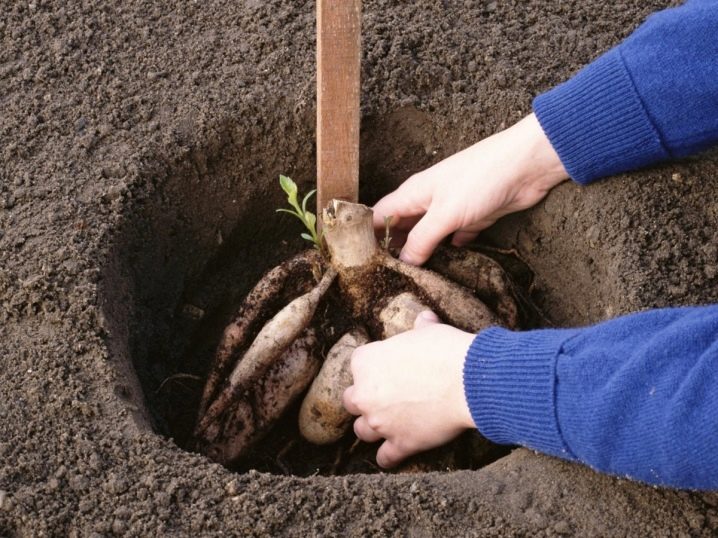
The specificity of caring for dahlias is a sufficient amount of watering and mulching the soil with a layer of at least 10 centimeters.
Sawdust, tree bark and other natural materials are perfect for mulch.
In order to grow larger specimens, stepchildren should be removed from the axils of the leaves and the side buds should be cut out. Mandatory measures are periodic feeding with appropriate preparations.
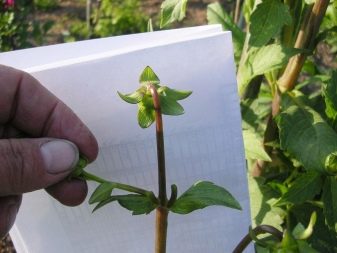
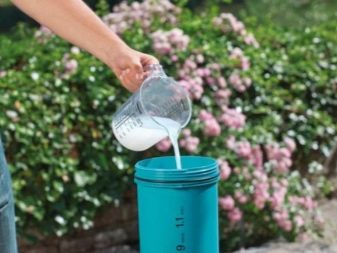
With the onset of cold weather, and this usually happens in October, the stems are cut at a height of 10-15 cm from the ground level. The tubers are dug up for storage. Before storage, they are well dried, placing in partial shade... The future planting material is stored in a cool room, sprinkled with peat tubers.
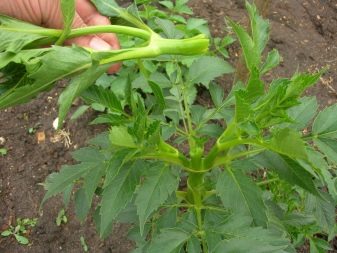
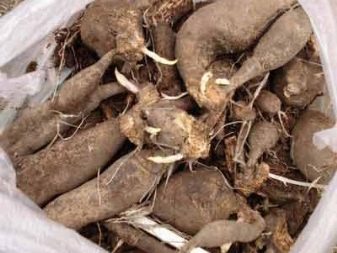
See below for more details.







































































































The comment was sent successfully.